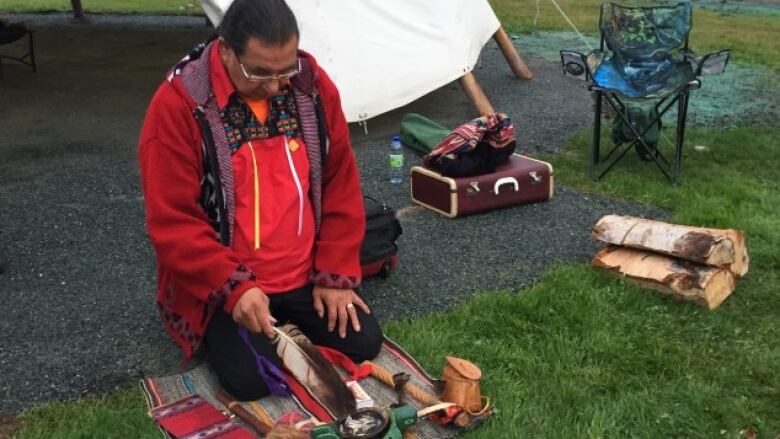New housing and cultural projects boost reconciliation efforts in Val-d'Or
After waiting for years, Indigenous community finally gets more social housing units

At a sunrise ceremony earlier this week inVal-d'Or,Anishinaabe elders inaugurateda new housing project they hope will help secure Indigenous culture in the area.
Indigenouscommunities around Val-d'Orhave been requesting more social housing for years. As of last week, 110families had already expressed interest in the 24 new units.
Community leaders believe the $6-million project will contribute to the reconciliation process in a town still recovering from explosive allegations in 2015 that provincial police abused several local Indigenous women.
"Now, we start to transmit our culture," OscarKistabish, anAnishinaabeelder and president of the Native Friendship Centre, told CBC's Quebec AM on Wednesday.
"It's not disappeared yet. We're still alive, you know? So, if you're still alive, you have to go back."
Recovering from crisis
The housing project is only one in a series of projects aimed at revitalizing local Indigenous communities. Leaders also used this week's National Aboriginal Day to inaugurate a new site for cultural practices.
Located on the shores of LacLemoine,just south of Val-d'Or,theKinawitcultural and tourist centre will have a designated area for sacred ceremonies.
And while that area will beoff-limits to general visitors,Kinawit is also designed to be a placeof outreach. It featurestraditional teepees and small cottages where people can sleep overnight.

An exhibition displays the realities of Indigenous people in urban areas, and a woodland trail aims to teach visitors about the forests' cultural and medicinal value.
Val-d'Or's Native Friendship Centre played a key role in making the projecta reality.EdithCloutier, the centre'sexecutive director, said the site will bridge the divide between Indigenous and non-Indigenous communities.
"We all know Val-d'Or has been through a major crisis in terms of relations between aboriginal and non-aboriginal people in the past few years," Cloutier said.
"It's basically our way of having our hospitality on the traditional land ofAnishinaabepeople."
Help with reconciliation
Both projects meet long-standing demands of the local Indigenous communities. But the required funding only became a realityafter the allegations of police abuse.
In response to that incident, the province announced it would spend close to $9 millionover five years for Indigenous peoples in urban regions.
The additional funding has made community leaders optimistic they will have the resources to forge ahead with reconciliation.
"I went to the residential school. So, I learned a different culture when I went to school,"Kistabishsaid."Now, it is time for me to go back to our culture."












_(720p).jpg)


 OFFICIAL HD MUSIC VIDEO.jpg)
.jpg)



























































































